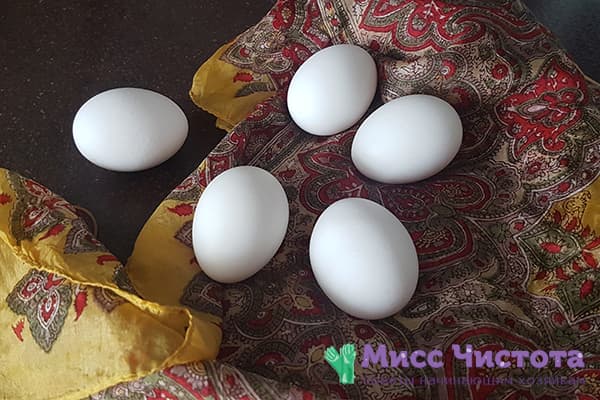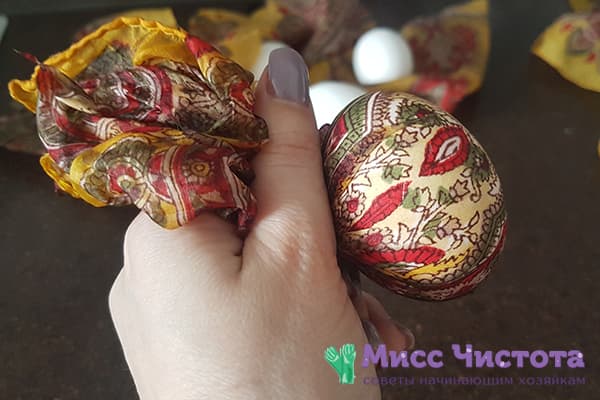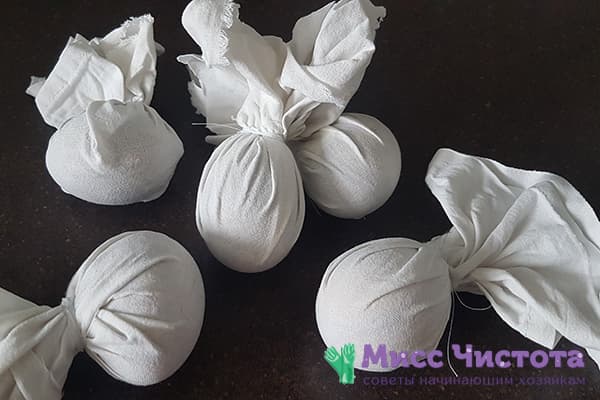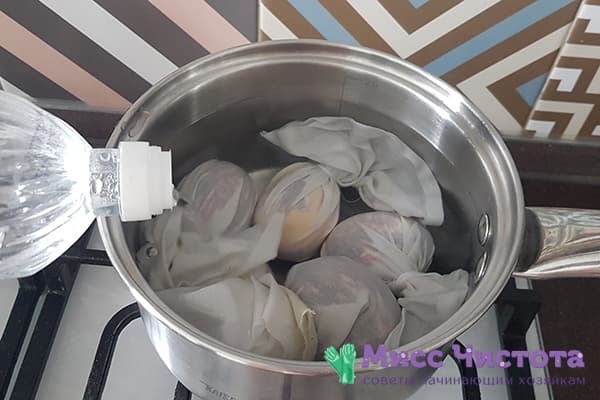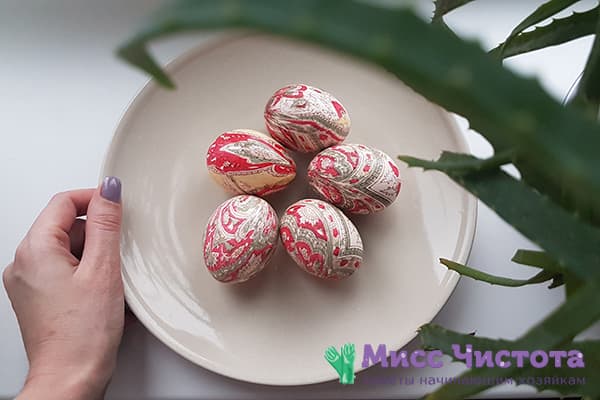How to beautifully paint eggs with fabric for Easter
On the eve of Easter, in my family it is traditionally time for experiments in preparing the main symbol of the holiday - colored eggs. This time I liked the original method of dyeing - with a cloth and vinegar. I note that not every colored fabric is suitable, even if it fades when washed. When creating Easter masterpieces, it will definitely be successful to use 100% natural silk, and for this you should carefully study the labels on the items used. You can use beautiful, but old scarves, shirts or ties with fancy patterns. You can also look for a silk item in a second-hand store.
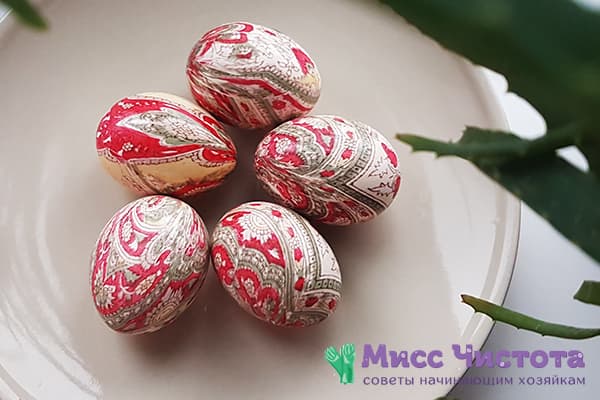
How to paint eggs with scraps?
It was experimentally found that dyeing Easter eggs in colored fabric requires no more time than traditional dyeing. However, the result in this case is truly surprising.
So, you will need:
- raw, white eggs;
- silk rags;
- scraps of plain cotton (or knitted) fabric;
- threads or elastic bands;
- scissors;
- vinegar;
- water;
- pot.
Step 1. Prepare the eggs.
Before boiling eggs, it is better to wash them with soap to distribute the color evenly and leave them for a while at room temperature. The latter will protect the shell from cracking. By the way, you can add a couple of tablespoons of salt to the water during cooking.
Step 2. Wrap with silk scraps.
The silk product must be cut into pieces measuring approximately 18 x 18 cm.This is enough to completely wrap the egg. Each piece of colored fabric should be moistened with water to make it easier to wrap the eggs. The front side of the fabric with a bright pattern should fit tightly to the shell, then the pattern will be clearer and brighter. To do this, it is important to smooth out air bubbles, folds and creases. However, blurry swirls also look interesting - they make the decor even more original and beautiful. You need to secure the silk with threads or rubber bands.
Step 3. Protect with pieces of white fabric.
A plain (preferably white) fabric - for example, an old T-shirt or cotton pillowcase - should also be cut into pieces of the same size as silk, and wrapped around the eggs over the colored scraps. Secure the fabric with a strong thread or rubber band. The result should be white bags.
Step 4. Fast and beautiful.
The eggs, wrapped in two layers of cloth, must be carefully placed in a pan of cold water. Add 9% table vinegar - approximately 1 part vinegar to 4 parts water.
Step 5. Painting with original patterns.
Boil eggs for 15 to 30 minutes. After cooking is complete, remove the pan from the heat, remove the eggs from the water, dry and cool them. Remove the fabric from the cooled dyes - and voila! The result is a thin, elegant drawing with intricate patterns that only a professional artist can create! For shine, you can grease the eggs with vegetable oil. On Easter Day, such an egg - beautiful and unique - will be an excellent handmade gift!
Nuances of the method
Tips for those who want to experiment with types of colored fabric:
- To dye eggs, you can use not only natural silk, but also other fabrics that are known to fade when washed.
- To determine whether a fabric sheds or not, it should be soaked in warm water, wrung out and laid out on a piece of gauze. Imprints of the paint after drying indicate that such a fabric is most likely suitable.
- It should be taken into account that in the case of an experiment, the result can be unpredictable: it is impossible to say for sure how a Chinese scarf of unknown origin will behave.
- You can even dye eggs with a Pavlovo Posad woolen scarf.
- It is better to take thin colored fabric, as it is easier to wrap the egg in it.
- The same piece of colored fabric can be used repeatedly.
It’s worth learning how to dye eggs in fabric for Easter, if only because this process is always intriguing - after all, until you unwrap the finished dye, you won’t know how the pattern turned out. During this activity, you can gather the whole family in the kitchen and wonder with interest who will get the most beautiful Easter egg. And then collect a whole basket of “silk” masterpieces, photograph them for a family album and distribute them the next day to those who are especially dear to you and your loved ones.
